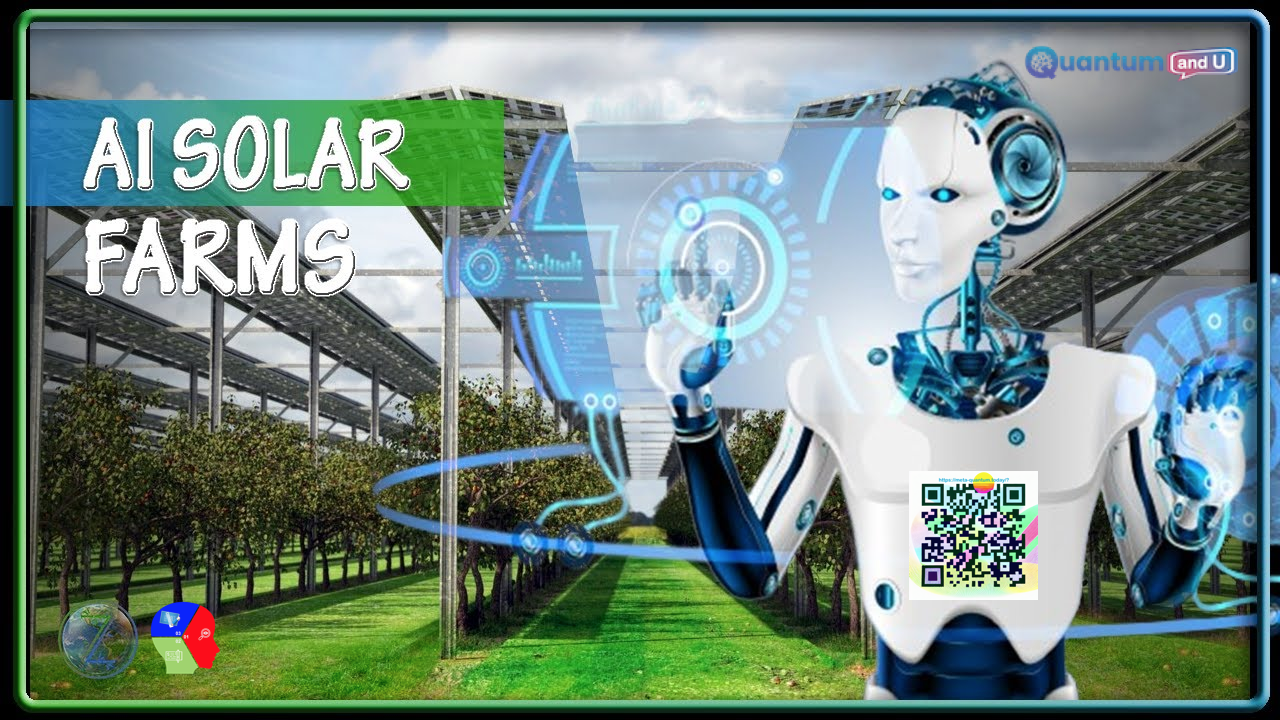
Introduction:
The world of farming is about to experience a revolutionary transformation that will change the way we have always known it. In this video, we will take a deep dive into the exciting and innovative world of artificial intelligence and solar power and how they are collaborating with agriculture to address some of the planet’s most pressing challenges. With the world’s population rapidly increasing and our demand for resources growing, we are running out of time to find sustainable solutions to combat climate change. Fortunately, the era of AI agrivoltaics has arrived, and it is paving the way towards a cooler and greener future. AI agrivoltaics is a groundbreaking technology that combines the use of artificial intelligence and solar power to make farming more sustainable, productive and efficient. By integrating solar panels into crop fields, we can harness the power of the sun to produce renewable energy while also providing shade to crops, ultimately resulting in a cooler and more comfortable environment for them to grow. AI, on the other hand, allows us to collect important data about crop growth, soil moisture, and temperature, and analyze it to optimize farming practices and reduce resource waste. This innovative technology is not only improving the quality of crops but also revolutionizing the way we farm today.
Market Size of AI Agrivoltaics in SEA:
The market size of AI agrivoltaics in Southeast Asia is projected to reach $1.8 billion by 2028, growing at a CAGR of 21.2% from 2023 to 2028. The increasing demand for renewable energy and the growing focus on sustainable agriculture are the key factors driving the growth of the market.
AI agrivoltaics is a system that combines solar photovoltaic (PV) panels with agricultural crops. This system has the potential to increase crop yields, improve water efficiency, and reduce pest infestations.
Southeast Asia is a region with a high potential for AI agrivoltaics. The region has a warm and sunny climate, which is ideal for solar PV generation. Additionally, the region has a large agricultural sector, which could benefit from the increased crop yields and water efficiency offered by AI agrivoltaics.
The growth of the AI agrivoltaics market in Southeast Asia is expected to be driven by the following factors:
- Increasing demand for renewable energy
- Growing focus on sustainable agriculture
- Favorable government policies
- Technological advancements
The increasing demand for renewable energy is one of the key factors driving the growth of the AI agrivoltaics market in Southeast Asia. The region is heavily reliant on fossil fuels for its energy needs. The growing focus on sustainable agriculture is another key factor driving the growth of the AI agrivoltaics market in Southeast Asia. The region is a major producer of agricultural products. Favorable government policies are also supporting the growth of the AI agrivoltaics market in Southeast Asia. Many governments in the region are providing subsidies and tax breaks for renewable energy projects. This is making AI agrivoltaics a more attractive investment option.
Technological advancements are also playing a role in the growth of the AI agrivoltaics market in Southeast Asia. The development of new technologies, such as AI-powered sensors and controllers, is making AI agrivoltaics systems more efficient and reliable.
Overall, the AI agrivoltaics market in Southeast Asia is expected to grow at a significant rate in the coming years. The market is being driven by the increasing demand for renewable energy, the growing focus on sustainable agriculture, and favorable government policies.
Related Sections:
- The Agricultural Dilemma: Our global agricultural systems are major contributors to greenhouse gas emissions and water consumption. As the world population surges towards 9.7 billion, the pressure on agriculture intensifies. We’re facing a critical water shortage and an urgent need for cleaner energy to curb global warming.
- Agrivoltaics Unveiled: Agrivoltaics, or APV, is the game-changing solution we’ve been waiting for. It ingeniously combines agriculture and solar power on the same land, allowing us to grow crops and generate clean energy simultaneously. But how do we prevent solar panels from shading crops and causing problems for plant growth?
- Maximizing Efficiency: Agrivoltaics doesn’t just coexist; it thrives. By strategically positioning solar panels above crops, we can precisely control the amount of sunlight each plant receives. This optimization leads to maximum growth while minimizing water loss. Plus, it creates a cooler microclimate that benefits not only crops but also livestock and farm workers.
- Solar Panels Love It Too: Solar panels, much like introverts, prefer cooler temperatures. Agrivoltaics keeps them cool, increasing their energy production by up to 10%. Imagine the possibilities for sustainable agriculture and energy production on a single farm.
- Land Conservation: The Department of Energy predicts a need for 10 million acres of land for solar tech in the US alone by 2050. Agrivoltaics offers a dual-purpose solution, eliminating the need to clear vast lands for solar farms. Community support is on its side, with over 80% of respondents willing to support solar development if it combines energy and agriculture.
- The Cost Factor: While agrivoltaics involves initial capital costs, it’s already competitive in terms of the levelized cost of electricity. At 7 to 12 euro cents per kilowatt-hour, it’s comparable to small rooftop PV systems. Additionally, it fosters biodiversity and a healthier ecosystem.
- The Future with AI: Imagine the potential when we integrate artificial intelligence into agrivoltaics. AI can optimize crop growth, protect crops from extreme weather, and make this system even more efficient and sustainable.
Conclusion:
AI agrivoltaics is a brilliant innovation that promises a brighter, greener future. It addresses the urgent need for sustainable agriculture, clean energy production, and land conservation. The benefits extend beyond efficiency; they include biodiversity and healthier ecosystems. As the industry continues to evolve, agrivoltaics is set to revolutionize agriculture, combat climate change, and improve our lives. So, get ready to embrace this innovative approach, and together, let’s make a positive impact on our planet.
Takeaway Key Points:
- Agrivoltaics combines agriculture and solar power to address pressing global challenges.
- It optimizes crop growth, minimizes water loss, and benefits both crops and solar panels.
- Agrivoltaics conserves land and enjoys strong community support.
- Initial capital costs are competitive with other renewable energy sources.
- Integrating AI can further enhance efficiency and sustainability.
References:
- Department of Energy predictions for solar tech in the US by 2050.
- Michigan Technological University study on community support for agrivoltaics.
- German Fraunhofer Institute’s study on the levelized cost of electricity.
- Benefits for biodiversity and ecosystem health.
- Sun’Agri’s viticulture agrivoltaic system in France.
- Agri-Photovoltaic, Arionpv (HQ in Singapore)


